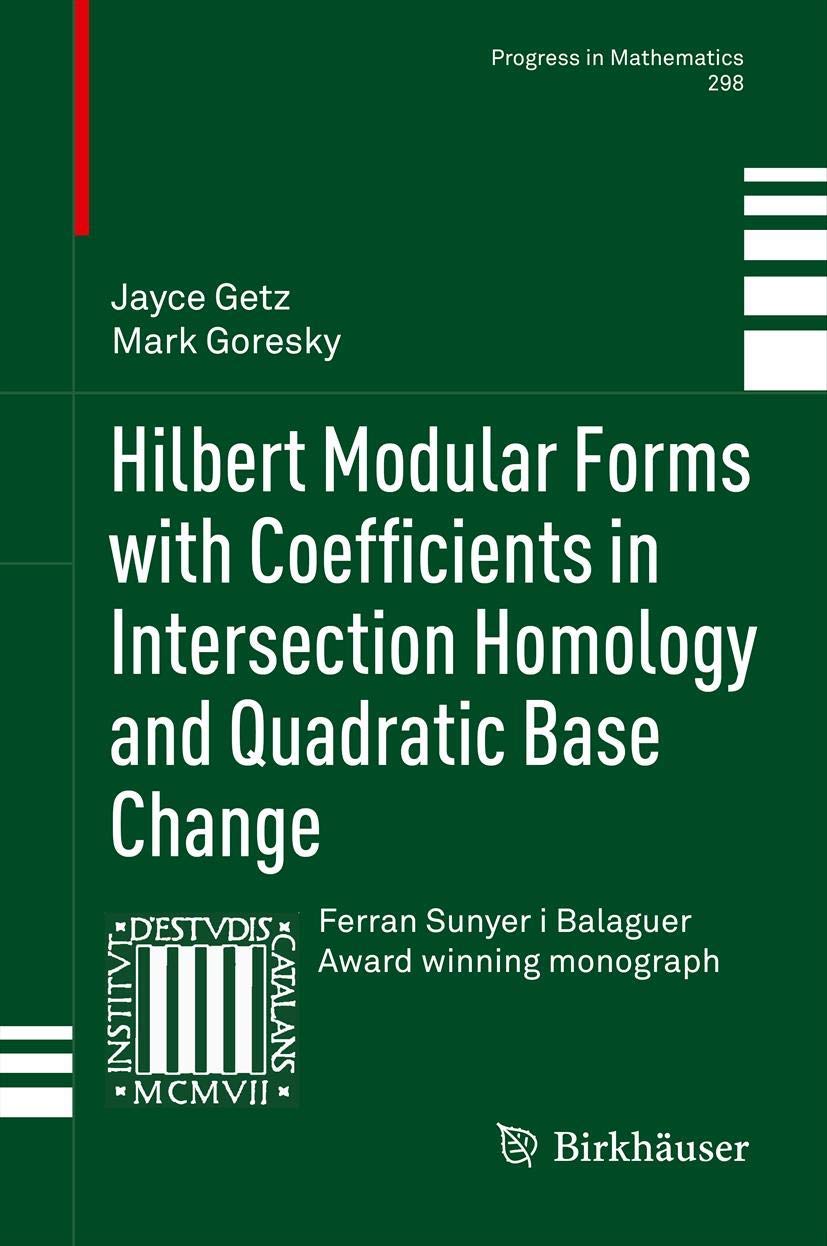Hilbert Modular Forms with Coefficients in Intersection Homology and Quadratic Base Change: 298 (Progress in Mathematics)
Hilbert Modular Forms with Coefficients in Intersection Homology and Quadratic Base Change: 298 (Progress in Mathematics) is backordered and will ship as soon as it is back in stock.
Couldn't load pickup availability
Genuine Products Guarantee
Genuine Products Guarantee
We guarantee 100% genuine products, and if proven otherwise, we will compensate you with 10 times the product's cost.
Delivery and Shipping
Delivery and Shipping
Products are generally ready for dispatch within 1 day and typically reach you in 3 to 5 days.
Book Details
-
Publisher: Birkhäuser
-
Author: Getz, Jayce
-
Language: English
-
Edition: 2012 ed.
-
ISBN: 9783034803502
-
Pages: 258
-
Cover: Hardcover
-
Dimensions: 9.1 x 6.2 x 0.8 inches
About the Book
Elliptic Modular Forms and Hilbert Modular Varieties by Jayce Getz provides an in-depth exploration of the profound work done by Hirzebruch and Zagier on elliptic modular forms, expanding their groundbreaking results to a broader, more general setting. In the 1970s, Hirzebruch and Zagier produced elliptic modular forms with coefficients in the homology of a Hilbert modular surface and computed their Fourier coefficients using period integrals and L-functions. Getz’s approach offers a conceptual expansion of these results, generalizing them to Hilbert modular varieties of arbitrary dimensions.
Utilizing advanced mathematical tools that were not available to Hirzebruch and Zagier, such as intersection homology theory, properties of modular cycles, and base change, this book introduces new techniques and perspectives in the study of modular forms. The concepts of automorphic vector bundles, Hecke operators, and Fourier coefficients of modular forms are presented with clarity, both in classical and adèlic settings.
This book is ideal for researchers and advanced students in mathematics, especially those focusing on algebraic geometry, number theory, and the theory of automorphic forms. It provides a foundation for further exploration of similar questions in other locally symmetric spaces and is a valuable resource for anyone looking to deepen their understanding of these complex, interconnected mathematical theories.





